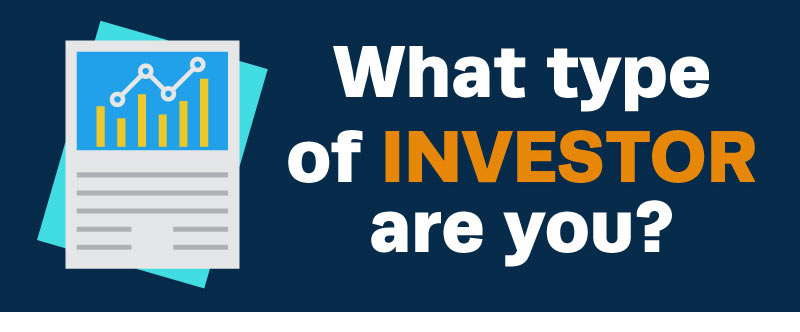Trading Too Much Hurts Returns
Vanguard, a giant in the money management world, kicked off the new year by eliminating trading fees.
In doing so, Vanguard finally joined Schwab, Fidelity and most other large players. Now almost everybody’s offering free stock trades to customers.
Free stock trades, in some ways, are great. For someone investing $100 at a time, this is a huge win. Their fees go from 5% to 10% of the total amount invested to 0%.
It will be easier for investors to rebalance their portfolio weightings as well.
But I am concerned about the overall effect of free trades. My fear is that people who already trade too much will trade even more. And this could actually hurt overall returns.
Trading Frequently Hurts Returns on Average
Terrance Odean, a finance professor at the University of California, Berkeley, did a study to determine whether trading frequently hurts overall returns on average. He used 78,000 real account records he obtained from a discount brokerage site.
Turns out that, on average, trading too much does hurt returns (emphasis mine)…
We divided investors into five groups based on how actively they were trading. Our prediction was that the more active traders, who are also likely to be the more overconfident traders, would trade too much and end up with lower performance after paying their trading costs. And that’s exactly what we found.
We found that the buy-and-hold investors, after trading costs, were outperforming the most active investors by about six or seven percentage points a year.
It’s a fascinating study. And getting access to the trading data was a coup for Odean.
Part of the reason buy-and-hold investors outperformed was due to trading fees (the study took place well before trades were free). But the study also clearly shows that trading activity itself was a cause of underperformance.
People feel good selling for gain so they sell the winners. They hold on to their losers to avoid the regret of selling for a loss…
I found that there was a strong tendency for people to sell their winners and hang on to their losers.
As humans, we are prone to making financial mistakes based on emotion. More trading means more chances for emotional mistakes.
There’s also the tax problem of frequent trading. When you do hit a winner, you usually pay short-term capital gains, which can take 35% to 40% off the top. With buy and hold, taxes are deferred for many years until you cash out. And when you do, you’ll pay a more reasonable tax rate of 15% to 20%.
Buy and hold also enables a critical function of investing: compounding your gains. You buy a stock (or stock index) with a nice dividend and growth, then buy more stock using the dividend. Over long periods, that dividend “compounds” your gains.
You do this using a DRIP (dividend reinvestment plan). Almost all brokers offer this to clients. But you can’t take advantage of this amazing wealth-building tool if you don’t buy and hold.
Find Great Companies, Hold Them Indefinitely
Like many investors, I went through a period where I was trading frequently, often in crap stocks. Luckily I was in my early 20s and didn’t have much money to burn.
By the time I was in my mid-20s, I had mostly learned my lesson. I began buying quality stocks, like Google and simply holding (for 13 years now).
Today, the average position in my portfolio has been there for about seven years. I have very little turnover and don’t bother rebalancing much.
I let my winners run, occasionally taking some profits after five years or so. But if it’s still a great company, I always aim to keep half for the very long term (20-plus years). The strategy has worked well over the years.
I’m not going to let free trades influence how often I trade. And I suggest that you do the same.
Startups = Automatic Buy and Hold
My buy-and-hold philosophy is one of the reasons I love startup investing. If you’re investing early, you’re typically not going to see liquidity (an exit) for five to 10 years. In other words, you (usually) can’t sell startup equity. So holding discipline is enforced automatically.
If you invest in a large number of high-quality startups, it’s likely that a few will have large exits. To make the startup math work, you need to hold for a long time. If you even had the chance to sell for a 10x gain after a year or two, that would ruin your chances of hitting a truly huge exit like 100x.
With startups, you don’t have to worry much about timing it wrong. You’re in it for the long haul, until the company fails, IPOs or gets bought out. And that’s the proper way to invest.
I have a number of startup investments that are already up 30x or more, and I wouldn’t sell even if I could. I want to hold on for the IPO at least. Startup investing is all about hitting huge winners, and you’ll need some big wins to make up for the ones that go bust.
This is how all the most successful venture capitalists run their portfolios, including Sequoia, Andreessen Horowitz and Union Square Ventures. The concept is known as “patient capital,” and I’m a major subscriber to the idea.
Done correctly, building a patient capital portfolio is simple, tax-efficient and profitable. I strongly recommend giving it a try.
About Adam Sharp
An active investor in more than 80 startups, Adam brings his extensive experience, research, due diligence and industry connections to guide readers through the exciting new investment space known as equity crowdfunding. As a former financial advisor, he also has extensive experience with internet marketing and financial writing. Adam has worked as a consultant for leading web properties with millions of visitors per day. He has built three profitable web businesses. And he now regularly shares his knowledge about investing in startups, cryptocurrency and cannabis in his free daily e-letter, Early Investing.






